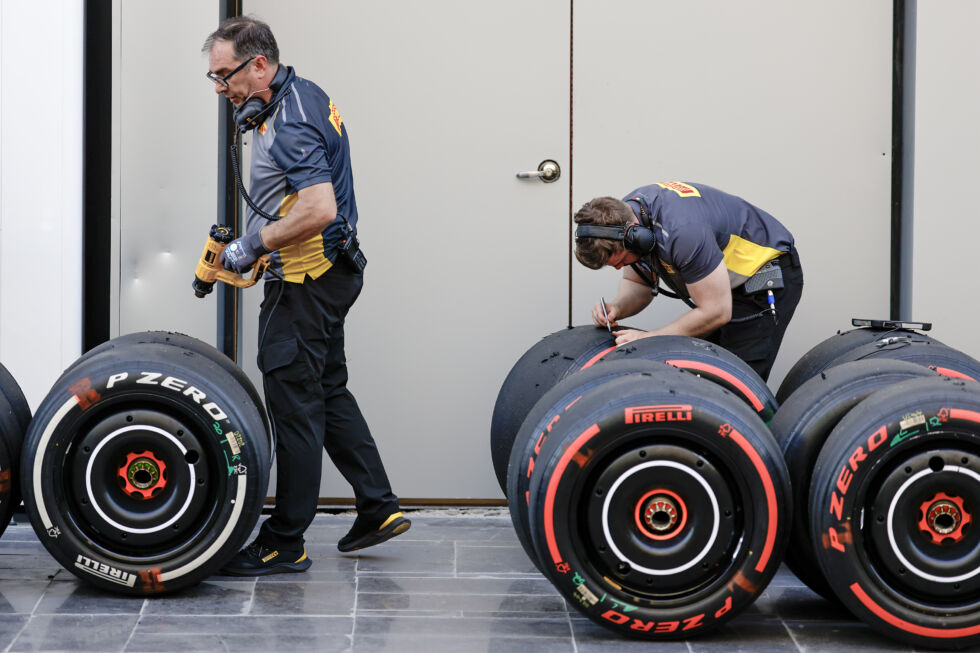pit stop —
The Forest Stewardship Council has given its approval to Pirelli’s natural rubber.

Enlarge / You’ll notice the Forest Stewardship Council’s logo on the sidewall to the right of the Pirelli logo.
Pirelli
Formula 1 is on a big sustainability kick. The race cars are switching to carbon neutral synthetic fuels. Teams are improving their logistics to cut freight emissions. Race tracks are starting to run entirely on solar power. And now, the tires that Pirelli brings to the races have been given the seal of approval by an NGO as meeting its standards for sustainable forestry.
It will be hard to spot when the cars are moving, but this year, you’ll find a tree logo on the sidewall. That indicates that the natural rubber that went into making the tire has been certified by the Forest Stewardship Council. Natural rubber makes up about 15 percent of the rubber in an F1 tire, with the rest being synthetic.
According to the FSC, natural rubber is a key driver of deforestry, as well as human rights abuses, particularly among the smallholders who farm 85 percent of the world’s natural rubber. By putting its logo on the tire, the FSC says that Pirelli has met “the world’s most credible standards for sustainable forestry,” protecting both the forests and the forest communities’ rights, including fair wages.
It’s one of a number of steps that Pirelli has put in place to make its F1 program more sustainable.
“I believe that the certification is an important step in this direction because it’s not Pirelli that is certifiying itself; it is a recognized third party that is giving us this certification, from the way in which we collect natural rubber, with respect of biodiversity, respect of the local population, the way we transport or use the natural rubber,” explained Mario Isola, head of Pirelli’s F1 program.
The synthetic rubber—chosen because it allows Pirelli to tune the characteristics it needs for the tires’ performance—is another area of attention. “Our R&D is focused on replacing the current material with more sustainable materials, keeping the same level of performance characteristics of the tire,” Isola told Ars.

Enlarge / Pirelli technicians work on the tires during practice ahead of the F1 Grand Prix of Saudi Arabia at Jeddah Corniche Circuit on March 7, 2024, in Jeddah, Saudi Arabia.
Qian Jun/MB Media/Getty Images
In other racing disciplines, particularly sports car racing, series have begun to restrict the total tire allocation across a race weekend to drive the development of more durable tires that will be used across multiple stints rather than being changed at each pit stop. That’s less appropriate in F1, where the rules require using two different tire compounds during a race. But for this year, Pirelli may well be able to cut the number of wet and intermediate tires by half.
“We are working on another idea that is what we call ‘strip and fit.’ When we fit a tire on a rim, even if it is new, we have to scrap it because of the bead and the stress that you put on the bead,” Isola said.
“But we made an investigation on wet and intermediate tires where the stress on the tire was lower compared to the slick tire. So the tires that we are going to fit but not use during the first half of the season will be dismounted and checked, and then we can use them in the second half of the season. If it doesn’t rain—obviously, we cannot control the weather—we are going to save roughly 50 percent of the rain tires,” he told me.
In other F1 tire news, we’ve now learned that the sport will stick with 18-inch wheels when the technical regulations undergo their next shake-up ahead of the 2026 season.
F1 only moved to 18-inch wheels from much smaller 13-inch wheels at the start of the 2022 season, long after any new vehicle was equipped with wheels so small. There have been complaints that the larger 18-inch wheels have added too much unsprung weight to the current generation of F1 cars, which are by far the heaviest the sport has seen in its history.
Consequently, it was believed that the sport might reduce the wheel size to 16 inches in 2026. But that would require an expensive testing program, and since 16-inch wheels are barely more road-relevant to current new vehicles than 13-inch wheels, the decision was made to stick with what we mostly have now, although the final tire size and shape have yet to be decided upon.